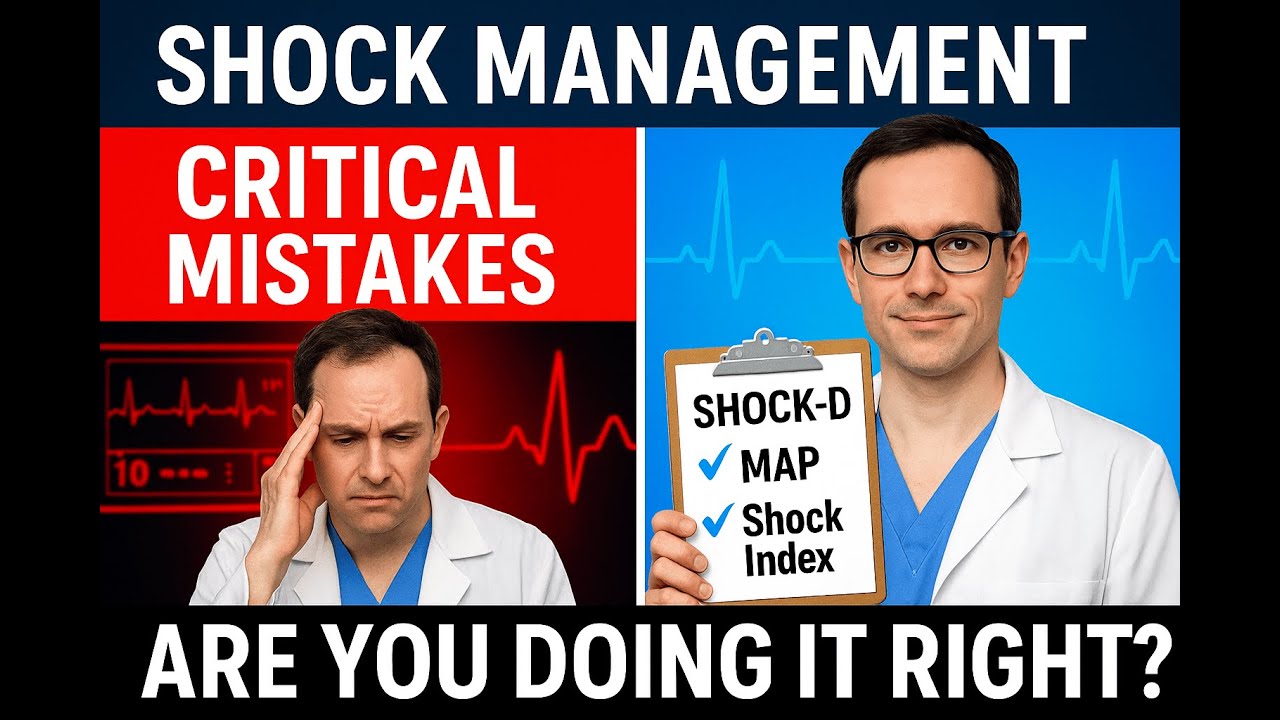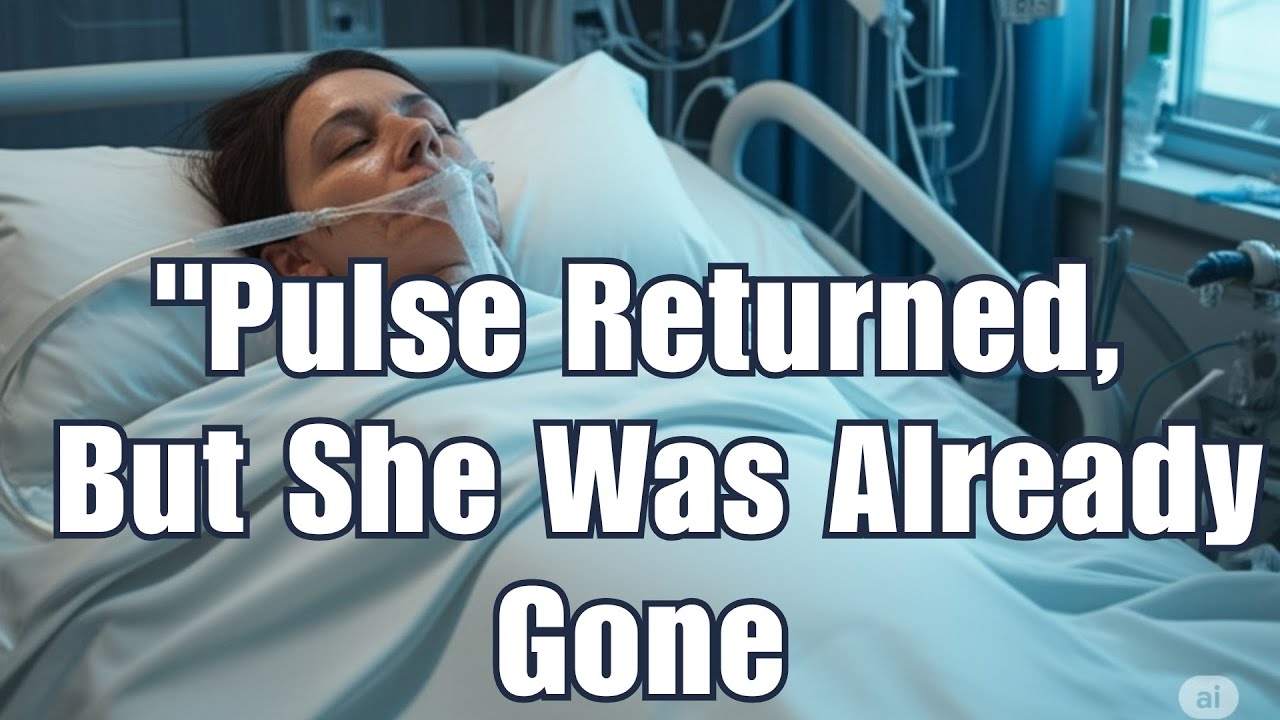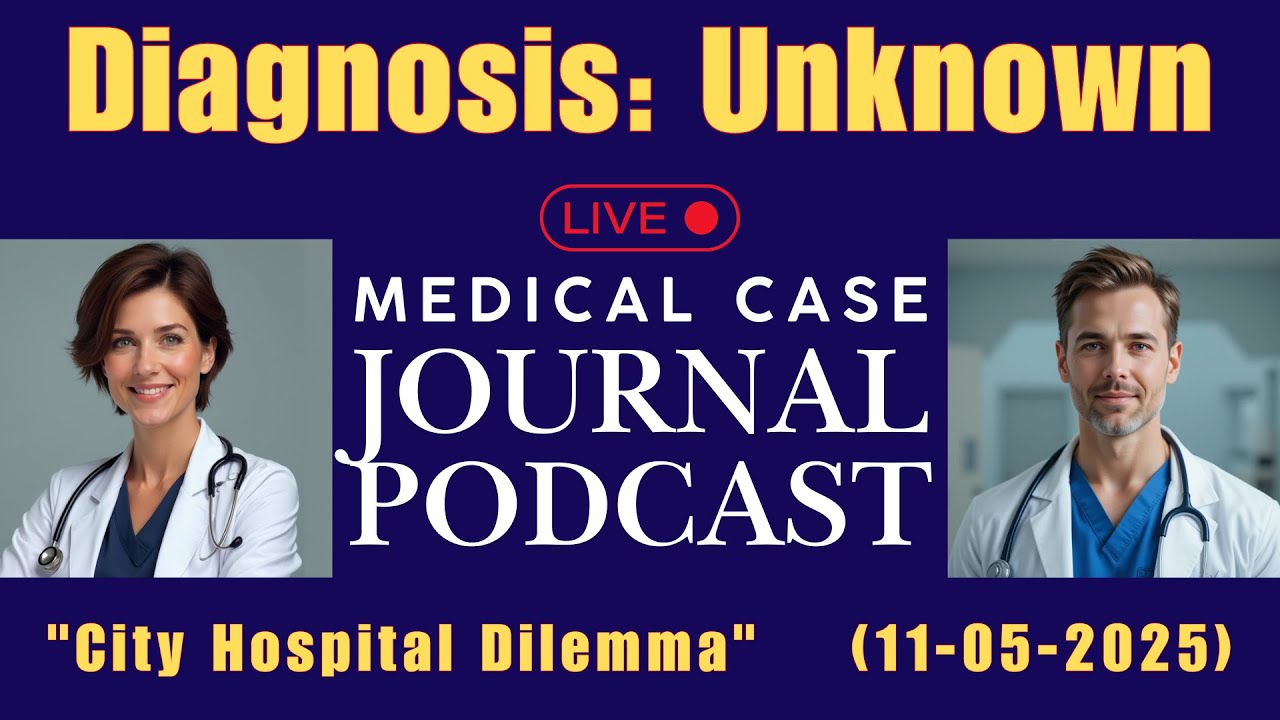Mastering Shock Management 5 Deadly Pitfalls Every Clinician Must #Shock#pitfall #medicalcasestudio
Description
🚨 Mastering Shock Management: 5 Deadly Pitfalls Every Clinician Must Avoid
Welcome to Medical Case Studio, where clinical clarity meets critical care. In this episode, Dr. Carter delves into real-world shock management strategies, focusing on the most common and potentially dangerous mistakes clinicians make when managing hypotensive patients in the emergency and critical care settings.
We go beyond textbooks to show you how to:
Use the SHOCK-D mnemonic to classify shock causes precisely
Rely on MAP (mean arterial pressure) over outdated systolic BP
Avoid fluid overload in obstructive shock, like PE
Apply passive leg raise and IVC ultrasound for fluid responsiveness
Use the shock index to guide intubation and predict mortality
🔑 Whether you're a resident, ICU physician, ER nurse, or paramedic, this video delivers life-saving insights and tools to improve your bedside decisions.
📌 Key Topics Covered:
✅ SHOCK-D Mnemonic (Septic, Hemorrhagic, Obstructive, etc.)
✅ Why MAP not Systolic BP
✅ How Shock Index predicts patient deterioration
✅ The dangers of reflexive fluid boluses
✅ Real case-based decision-making
🔍 Timestamps:
00:00 – Intro
01:15 – Shock classification flaws
02:00 – SHOCK-D mnemonic breakdown
03:30 – MAP vs systolic BP
05:00 – Fluid mistakes in PE
06:20 – Shock index warning signs
08:00 – 5 critical mistakes recap
09:30 – Final message
🎯 Covered Material:
The "SHOCKD" mnemonic aims to simplify the differential diagnosis of hypotension by providing a structured, easy-to-remember list of potential causes. It's designed to be more practical, especially in high-stress situations.
MAP is a better indicator of perfusion because it accounts for both systolic and diastolic blood pressure, with diastolic pressure being weighted more heavily. Making MAP a more comprehensive measure than just systolic pressure.
The “relaxed approach” refers to the slow management of hypotensive patients, often involving waiting an hour between fluid boluses without reassessing. This delay is detrimental because every minute of hypoperfusion inflicts damage on vital organs like the brain, gut, heart, and kidneys, leading to increased morbidity and mortality.
Early norepinephrine administration is advocated because every hour delay in treating shock increases mortality significantly. Starting norepinephrine within 30 minutes if fluids aren't quickly effective can help improve lactate clearance and shorten the overall duration needed for vasopressor support, ultimately leading to a faster patient turnaround.
Cardioversion is highlighted as the "best, fastest, and safest" therapy for unstable tachyarrhythmias, as seen in the v-tach example. International guidelines also support immediate sedation and shocking as the only Class I therapy for ventricular tachycardia, indicating its superior efficacy.
In massive PE, the right ventricle is distended due to obstruction of flow to the lungs, pushing the interventricular septum into the left ventricle and decreasing its filling and output. Giving fluids further distends the right ventricle, exacerbating the septal shift, making the left ventricle even smaller, and thus worsening the hypotension.
The passive leg raise involves elevating a patient's legs to effectively auto-transfuse 250-500cc of blood into the central circulation. This maneuver serves as a strong predictor of fluid responsiveness, indicating whether a patient will benefit from additional intravenous fluids based on their hemodynamic response.
Shock Index is calculated as heart rate divided by systolic blood pressure, with a normal value typically less than 0.7. Intuitively, an elevated Shock Index (where heart rate is higher than blood pressure) suggests a concerning state of inadequate perfusion and potential decompensation.
The Shock Index is also highly specific for predicting hyperlactatemia and 28-day mortality, serving as a reliable indicator of patient severity. Furthermore, it is a crucial predictor of which patients require resuscitation before intubation, as a high Shock Index (greater than 0.8) suggests a high risk of crashing post-intubation.
It is advised against immediate intubation if a patient's Shock Index is greater than 0.8. Instead, the patient should be resuscitated first, as a high Shock Index is the best predictor that a patient will experience a sudden drop in blood pressure or cardiac arrest immediately after intubation.
🔔 Subscribe for weekly medical mysteries: [http://www.youtube.com/@Dr.AfshinT.A]
🎧 Available on :
@Join us on TikTok : https://www.tiktok.com/@dr.a.t.a?_t=Z...
@Join us on Telegram: https://t.me/MedicalCaseStudio
@Join us on Podbean: https://www.podbean.com/user-6mx5pwTzDun3
@Dr.AfshinT.A
🗣️ Share your thoughts and write your comments with us: http://www.youtube.com/@Dr.AfshinT.A
#ShockManagement #CriticalCareTips #EmergencyMedicine #ICUTraining #MAPvsSBP #ShockIndex #FluidResuscitation #AvoidingPitfalls #ShockMnemonic #ERDoctors #IntubationTips #medicalcasestudio





















